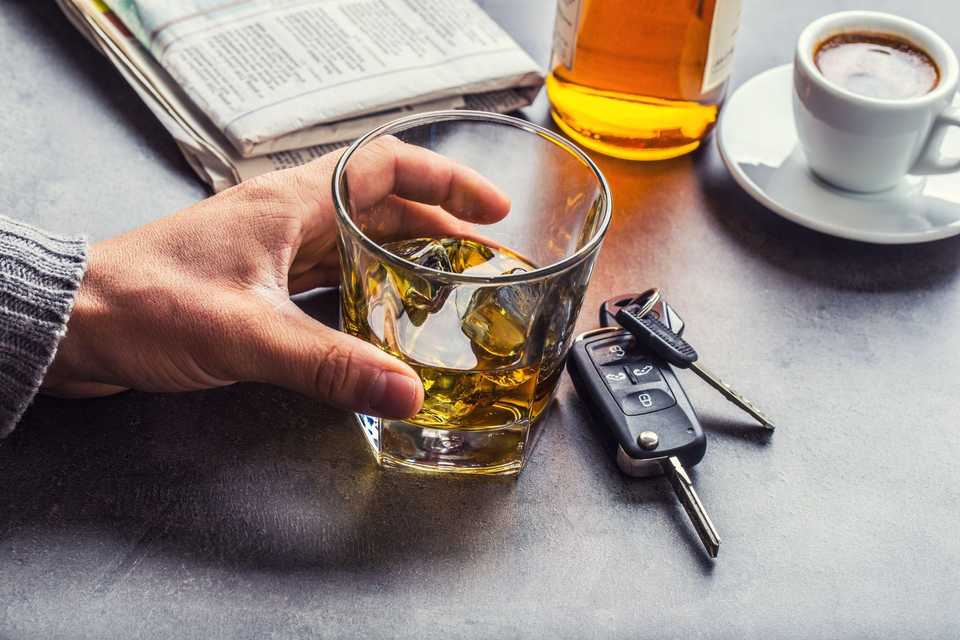Having a driver's license is not just a matter of convenience, but a significant aspect of independence and mobility for many people in Ontario.
However, this privilege can be temporarily revoked for various reasons, leading to a suspension. This guide aims to provide a comprehensive overview of what a driver’s license suspension entails and how to restore it.

Keep reading to regain your lost independence and get back to driving safely and legally!
Understanding the reasons for suspension
In Ontario, a driver's license can be suspended for several reasons, each carrying its own set of legal implications and processes for reinstatement. Understanding these reasons is the first step towards regaining your driving privileges.
One of the most common reasons for license suspension is driving under the influence (DUI) of alcohol or drugs. Ontario has strict laws against DUI, and being convicted can lead to immediate license suspension, along with other penalties.
Other frequent causes of suspension include accumulating too many demerit points, unpaid fines associated with traffic violations or other offences, failing to pay family support, failing to provide proof of insurance, and medical reasons affecting someone’s ability to drive safely.
It’s important to note that each cause has its own set of legal procedures and implications, which may affect the process and requirements for reinstatement.
The general process of reinstating your license
Reinstating a suspended driver's license in Ontario involves a series of steps that must be carefully followed. The process can vary depending on the reason for suspension, but there are general guidelines that apply in most cases.

Typically, once the suspension period is over, you may be required to complete certain tasks before applying for reinstatement. These could include paying outstanding fines, completing a remedial driving course, or providing medical clearance if the suspension was for medical reasons.
The next step is to apply for reinstatement. This typically involves submitting a reinstatement application to the Ministry of Transportation of Ontario (MTO), which includes a $281 reinstatement fee in most cases. The application may also require supporting documents, such as proof of course completion or medical fitness.
In some cases, you might also need to retake your driving test , including both the written and road tests. This is especially common in cases of long-term suspensions or those related to driving competency.
| After submitting your application and any required fees, the MTO will review your case. If approved, you will receive a notice of reinstatement. It's important to note that driving with a suspended license is a serious offence in Ontario , and you should not drive until you have officially been reinstated. |
|---|
Suspensions due to DIUs
Upon being charged with a DUI-related offence, an immediate administrative suspension is enforced under the Highway Traffic Act of Ontario. This suspension is independent of any criminal charges or subsequent court-ordered suspensions resulting from a DUI conviction. Following a DUI conviction, there is a separate, court-ordered license suspension.
The first step towards reinstatement is serving the full duration of the suspension period. This period is determined based on the specific circumstances of the DUI offence and any previous driving record.
Depending on the nature of the DUI offence, individuals may be required to complete certain educational or rehabilitation programs. These programs are designed to address issues related to impaired driving and to promote safer driving habits.

Additionally, there are often financial penalties associated with DUI offences, including fines and fees related to the reinstatement process. In some cases, there may be additional legal requirements, such as attending court hearings or fulfilling conditions set by the court.
Once all conditions have been met, you can apply for reinstatement of your driver's license. This application is then reviewed by the Ministry of Transportation, which assesses whether all requirements have been satisfactorily completed.
If you have been convicted of dangerous driving, you will also need to conduct a driver improvement interview and successfully complete a re-examination at a DriveTest Centre.
For more information on DUI license suspensions in Ontario, read our article on the RIDE program in Ontario !
Suspensions due to unpaid fines
In Ontario, a driver's license can also be suspended for non-payment of fines, as indicated under the Highway Traffic Act. For instance, if a driver fails to pay fines imposed for traffic violations, their license can be suspended.
To reinstate a driver’s license suspended due to unpaid fines, the individual will need to pay all outstanding fines in full before applying for reinstatement, which also includes a reinstatement fee.
Suspensions due to medical reasons
Medical suspensions are typically based on assessments regarding a driver's fitness to operate a vehicle safely. These assessments can be triggered by medical professionals or law enforcement if there is concern about a driver's health and its impact on their driving abilities.
The process for reinstating a license suspended for medical reasons is more complex. It begins with addressing the medical issue that led to the suspension.
The individual must provide evidence, typically in the form of a medical report, that they are now fit to drive. This report must come from a qualified medical professional and should address the specific concerns that led to the initial suspension.

Once the medical clearance is obtained, the individual can apply for reinstatement. The reinstatement fee of $281 does not apply if the license was suspended for medical reasons.
Suspensions for failing to provide proof of insurance
This situation typically arises when a driver is unable to show valid auto insurance during a traffic stop or at the scene of an accident. The consequences of driving without insurance are severe, including a license suspension.
To reinstate the license, the individual must first serve the suspension period, which is related to the severity of the offence and previous history of similar violations. Then, the driver must show evidence of valid auto insurance in order to be compliant with Ontario’s mandatory insurance laws before paying the reinstatement fee.
Suspension due to demerit points
In Ontario, the demerit points system is a critical component of driver responsibility and road safety. Points are added to a driver's record for various traffic violations and remain on the driver’s record for two years from the offence date. Accumulating too many points can lead to the suspension of a driver's license. For instance, new drivers face a 60-day suspension for accumulating over 9 points, while fully licensed drivers face a 30-day suspension for accumulating over 15 points.
To reinstate a license in these cases, the first step is to pay any outstanding fines and complete any court-ordered programs. Drivers must then gather documents that prove the suspension has been lifted, including a Notice of Suspension letter or an affidavit.
When applying for a new license, the reinstatement fee will be required. Additionally, depending on the duration of the suspension, drivers may need to undergo various tests. For instance, if the full-class license was suspended for 1-3 years, an eye test is necessary.
For suspensions lasting 3-10 years, drivers must take a written knowledge test, an eye test, and two road tests (G1 and G2). Those with a suspension of over 10 years must reapply as new drivers and retake all required tests.

If the suspension was due to dangerous driving, additional steps include completing a driver improvement interview and a full re-examination.
Suspension for failing to pay family support
In Ontario, the Family Responsibility Office (FRO) plays a pivotal role in ensuring that support payments are made. When an individual fails to comply with their family support obligations, the FRO has the authority to request the Ministry of Transportation to suspend their driver's license. This action is often a last resort, used only after other methods to secure payment have failed.
When notified about the potential suspension of a license by the Family Responsibility Office (FRO), a driver is presented with a deadline by which they must take one of the following actions to avert the suspension :
| The most straightforward approach is to clear all the arrears that are due immediately. This means paying the entire amount that is owed in family support payments. If the individual is unable to pay the full amount at once, another option is to negotiate a voluntary payment plan with the FRO. This plan involves agreeing to a schedule for paying off the arrears over time. The third option is to request a refraining order from the court, which is a legal directive that temporarily stops the FRO from suspending a driver’s license. This order gives the driver some time to address the arrears or to challenge the suspension. |
|---|
To reinstate a suspended license, the driver will typically have to pay any outstanding family support payments. It's important to note that the full amount owed must be cleared before moving forward with reinstating the license.
If the suspension was accompanied by any court orders or requirements, these must be fulfilled. Then, the individual can apply for reinstatement of their driver’s license, which requires the payment of the $281 fee.
The final step is receiving official notice from the Ministry of Transportation and the FRO that the license has been reinstated. It's crucial not to drive until this official confirmation is received to avoid further legal complications.
Reinstating a suspended driver’s license outside Ontario
For those outside Ontario, the process begins with a crucial step: submitting the reinstatement fee of $281. However, the method of payment and the submission process require careful attention.

After submitting the reinstatement fee, the driver will have to prepare a signed letter that should include their license number or full name and date of birth, a clear statement of the reason for their request, an out-of-province mailing address, and a contact telephone number or email address. This letter is essential, as it provides the MTO with all the necessary information to process the request.
Payment can be made via a cheque or money order, drawn on a Canadian bank account and made payable to the "Minister of Finance/MTO." Alternatively, for those who prefer using a credit card, Visa or Mastercard are accepted.
Once the payment and accompanying letters are ready, they should be submitted to the MTO online or by mail to the MTO’s Licensing Administration and Support Office at their Special Enquiry Unit in Toronto.
Seeking legal assistance to regain your driving privileges
Legal assistance is particularly advisable in cases where the suspension is due to serious offences such as DUIs or where there are disputes about the reasons for suspension.
A lawyer specializing in traffic law can provide valuable guidance, help in understanding the legal implications of your suspension, and represent you in any necessary legal proceedings.

A lawyer can assist in several ways. They can help in gathering and submitting the necessary documentation, represent you in court if required, and provide advice on how to avoid future suspensions. They can also negotiate on your behalf, potentially reducing the duration of the suspension or the severity of other penalties.
If you find yourself in a situation where your driver's license has been suspended, remember that you don't have to go through this process alone.
JuriGo offers a platform to connect you with experienced lawyers who specialize in traffic law and can assist you through every step of reinstating your suspended driver's license in Ontario.
Simply fill out the form below and you will be connected with a lawyer who can assist you. Our service is completely free of charge and without any obligations!
